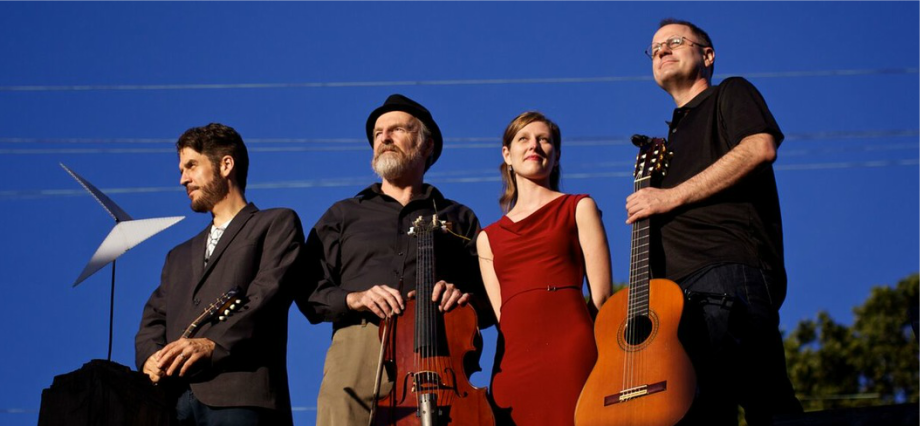Quartet #3 "The Microtonal" by Garry Eister
Quartet #3 "The Microtonal" (three movements) by Garry Eister written for ensembleFRET (Peter Yates, Walter Marsh, and Buzz Gravelle) with JohnPaul Trotter, is written for a variety of guitars (steel string, classical, 12-string, slide guitar) and mandolin.
Thanks to Guitar Salon International in Santa Monica, CA for the video location and Kai Narezo and Tara Stewart for filming and recording.
Thanks to Guitar Salon International in Santa Monica, CA for the video location and Kai Narezo and Tara Stewart for filming and recording.
"Sleep Another Night" by Garry Eister
From Garry Eister:
I composed "Sleep Another Night" for ensembleFRET: Walter Marsh-guitar; Buzz Gravelle-mandolin; Peter Yates-arpeggione. The piece began and ended as a lullaby, although it lost some of that quality, particularly in the middle sections, as I worked on it. Still, near the very end of the piece, just before the music drifts off into Slumberland, one could hear the melodic shape and rhythm of the famous musical setting whose words are "Down will come baby, cradle and all," and, even more deeply hidden right before that, the melodic shape of "Rockabye, baby" in the arpeggione.
I love writing for unusual instruments, and it was fun to do something for the arpeggione. On discussing the instrument with me, Yates remarked that a friend of his said that if one doesn't write some arpeggios for the arpeggione, what's the point of using it? I took the excellent advice implicit in this rhetorical question and wrote a brief arpeggiating solo for the arpeggione followed by a series of arpeggiated chords that accompany a series of rising arpeggiated guitar chords which would serve as the climax of the piece, if it had one. Instead, it falls asleep.
I composed "Sleep Another Night" for ensembleFRET: Walter Marsh-guitar; Buzz Gravelle-mandolin; Peter Yates-arpeggione. The piece began and ended as a lullaby, although it lost some of that quality, particularly in the middle sections, as I worked on it. Still, near the very end of the piece, just before the music drifts off into Slumberland, one could hear the melodic shape and rhythm of the famous musical setting whose words are "Down will come baby, cradle and all," and, even more deeply hidden right before that, the melodic shape of "Rockabye, baby" in the arpeggione.
I love writing for unusual instruments, and it was fun to do something for the arpeggione. On discussing the instrument with me, Yates remarked that a friend of his said that if one doesn't write some arpeggios for the arpeggione, what's the point of using it? I took the excellent advice implicit in this rhetorical question and wrote a brief arpeggiating solo for the arpeggione followed by a series of arpeggiated chords that accompany a series of rising arpeggiated guitar chords which would serve as the climax of the piece, if it had one. Instead, it falls asleep.
Visit our YouTube page HERE
Mambo No. 1 & Go-Go Boogie - by Theodore Norman
March 19, 2014 - Cal State Long Beach
March 19, 2014 - Cal State Long Beach
|
|
|
|
Kolo - by Theodore Norman
November 16, 2012 - UCLA |
Polluted Ducks - by Theodore Norman
October 7th, 2012 -Colburn School |
|
|
|
|
Largo - by Antonio Vivaldi
November 16, 2012 - UCLA |
Glad Rag - by Theodore Norman
May, 2012 - Cal Poly Pomona |

